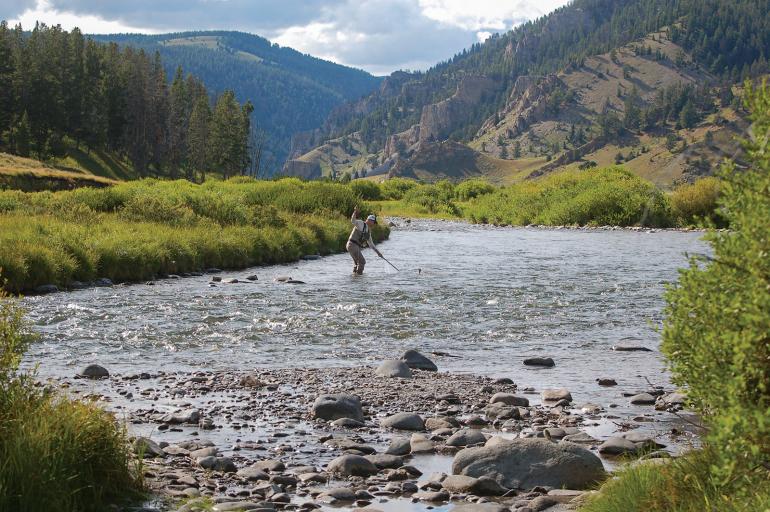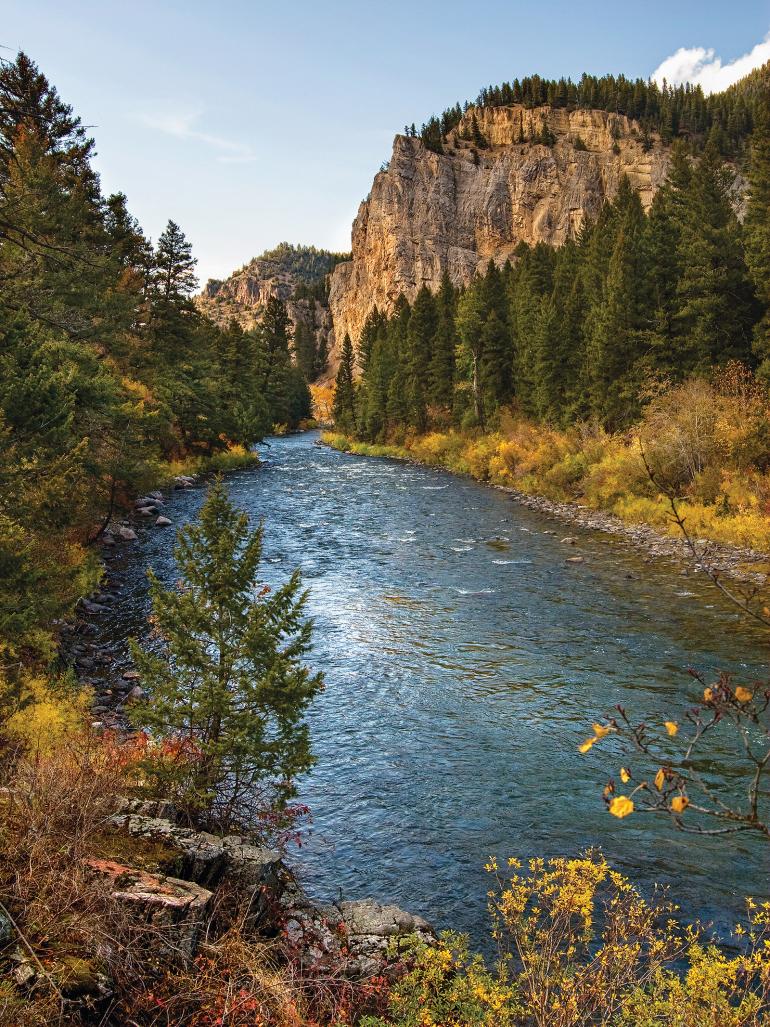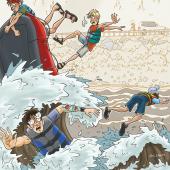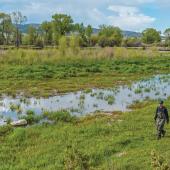Gallatin: Tried & True
A classic Montana trout stream.
The Gallatin River is the quintessential Montana freestone fishery. With deep pocket water in the canyon, multiple riffle-strewn meadows, and a valley stretch full of bends and pools, the Gallatin may be the finest wade fishery in Montana for the do-it-yourself angler.
Access
The Gallatin originates at Gallatin Lake in Yellowstone National Park. From the lake, the river runs 12 miles to where it meets Hwy. 191 near the Bighorn Pass trailhead. The upper Gallatin is the most remote and least-pressured stretch of river. For the angler looking for solitude and plentiful fish, this is the section. Just don’t forget your Park fishing license. The river then parallels the highway northbound to the town of Big Sky. This is small, manageable water, with good access. There are private areas, but Montana’s stream-access law applies. The upper Gallatin is shallow, making streambed travel a good option. If you plan to fish this stretch, don’t forget bear spray—bears and moose are extremely common.
Below Big Sky, the river enters Gallatin Canyon, one of the most scenic drives in the state. Anglers looking for deep, beautiful pocket water, plentiful access, and a pile of fish will find serenity here. This may be the most easily-accessed stretch of river in Montana. Thirty miles of national-forest access and abundant pullouts make this a wade-angler’s dream. Gallatin Canyon should be on everyone’s list of places to fish. The water here is deep and fast, and a wading staff is a good thing to bring along.
The Gallatin exits the canyon just south of Gallatin Gateway. At this point it begins its meandering journey through the Gallatin Valley toward Headwaters State Park. This stretch of river is mostly private, but has numerous state-maintained access points throughout. Again, the state’s stream-access law allows for plenty of walk-wade opportunities. In the valley, you will find fewer numbers of fish, but a bigger average size.
Flows
The upper stretch of the Gallatin is small water and remains fishable year-round. As the river approaches Big Sky, tributaries add water. From Big Sky to Manhattan, the stream becomes modest-sized and fast-flowing. Ideal flows for this stretch are 500cfs and below. That said, as the water clears post-runoff, the river fishes well from shore. Just don’t plan on doing much wading. Flows from 1,000 to 2,000cfs in the canyon can provide some incredible bank fishing. After the confluence with the East Gallatin, the river becomes quite large, with islands, high banks, and holes over six feet deep.
When to Go
The Park stretch of the Gallatin is open from Memorial Day weekend to October 31. This upper stretch fishes best in the summer months when other local waters may be too warm. The canyon stretch is a fantastic four-season fishery. With shady canyon walls keeping the water cool, fast water adding oxygen, and deep, slow pockets in between, there’s plenty of prime holding water no matter the season or water temperature. Runoff, however, can shut down the fishing for a short while in May and June.
The valley stretch is mostly a spring and fall fishery. The river flows through a lot of agricultural land, and irrigation contributes to low, warm water in late summer. During winter, some lower areas disappear under ice. Prime times for the lower stretch are March through mid-July, and then again in September through November. Generally, mid-July and August are best spent upstream of Four Corners.
Fish
The Gallatin River has a plethora of browns, rainbows, and whitefish. Additionally, brook trout, cutthroat trout, and the rare grayling come out of the stream every year. All styles of fishing work well on the Gallatin. The upper valley portion is a tremendous terrestrial and soft-hackle stream. The canyon stretch is an excellent nymph fishery with plenty of stoneflies, mayflies, and caddis to keep the dry-fly angler entertained. In the valley, you’ll find that dries, streamers, and nymphs get the job done. It’s extremely difficult to beat a chubby, a Copper John, and a wooly bugger throughout the system.
Row vs. Wade
Anglers are allowed to fish from a boat north (downstream) of the confluence with the East Gallatin. South (upstream) of this confluence, fishing from a boat is prohibited. The Gallatin is a technical river to float, and is best left to experienced whitewater boaters. Many an overconfident amateur has been swept into a strainer for a harrowing, humbling experience.
Regs
Standard, statewide regulations apply on the Gallatin. If you’re looking to fish inside the Yellowstone Park boundary, however, you’ll need a special Park fishing permit.
Getting There
From Bozeman, take Huffine Lane west to Four Corners. From there, you can head south to fish the upper valley, canyon, and Park stretches. Head north for lower-valley access.
Jake Walbridge is the manager at Montana Troutfitters.













